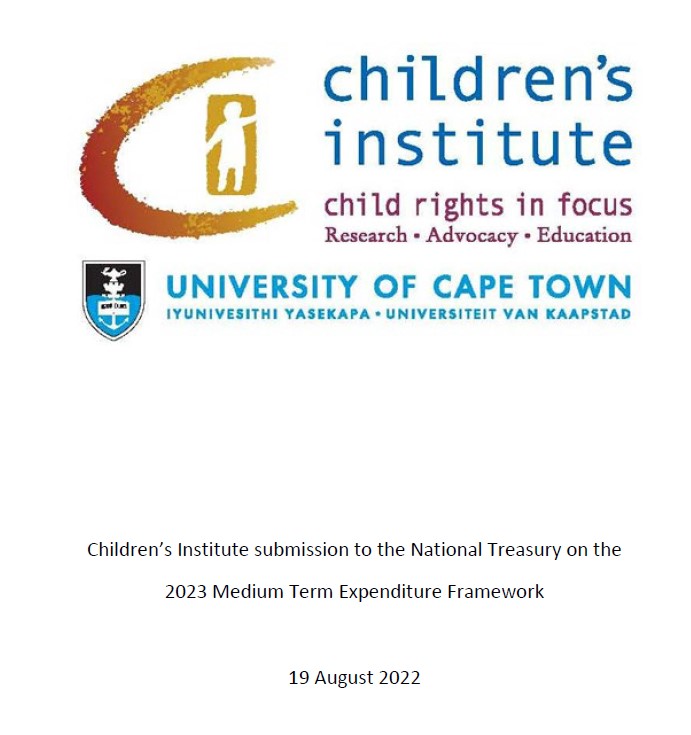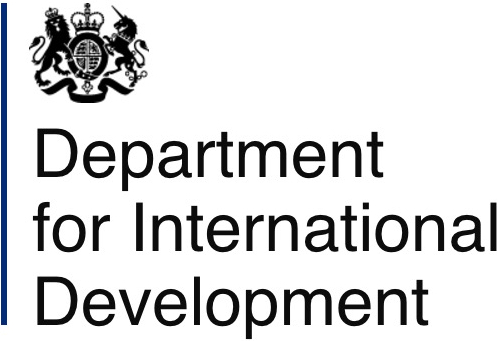Definition
This indicator shows the counts of child murder recorded by the South African Police Service (SAPS) in a given financial year. Murder is defined as the unlawful and intentional killing of another human being. Murder statistics are often seen as the most reliable crime statistics but research based on data from mortuaries indicates that a number of child murders remain hidden, such as when abuse-related deaths are attributed to natural or accidental causes or when infants are 'dumped' or abandoned after birth. Data
Source
South African Police Service crime data, 2013/14 – 2016/17 (child victims only, accessed November 2017). Maps are based on 2016/17 crime data. Analysis by Aislinn Delany & Katharine Hall, Children’s Institute, University of Cape Town.
Notes
1. Children are defined as persons aged 0 - 17 years. 2. Where no counts of this category of crime were reported (0 count), the map appears blank. 'District' boundaries displayed here are an approximation of the municipal district boundaries and are made up of the precincts that fall within each district, with the precinct boundaries 'dissolved'.
What do the numbers tell us?
Child murder is the most extreme outcome of violence against children. In 2016/17, there were a total of 803 counts of murder in which age data was available and identified the victims as children. Based on these figures, the national child murder rate in 2016/17 stood at 4.3 murders per 100,000 children. This is similar to the (2012) global average of 4 child murders per 100,000 children.1 The total number (803) of child murders in this dataset provided by SAPS is slightly lower than the number of child murders (839) reported in the addendum to the SAPS 2016/17 Annual Report. It is not clear why this is the case, although the report notes that the figure of 839 includes unfounded cases.2 These child murders made up 4% of the 19,016 counts of murder recorded by SAPS in 2016/17, but this is likely to be an undercount as it relies on the availability of reliable information on the age of the victim.
These annual child murder figures are lower than the estimates provided by a 2009 national retrospective mortuary-based survey conducted by the Medical Research Council.3 This study estimated that there were 1,018 child murders in South Africa in 2009, giving a national crime rate of 5.5 child murders per 100,000 population for 2009. Of these, 45% occurred in the context of child abuse. A recent child death review pilot study which collected data from mortuaries in the Western Cape and KwaZulu-Natal found that homicide was the second most common cause of death among children after respiratory tract infections.4 The highest burden of homicide was in the 15 to 17 year age group.
The table below provides the murder rate across province, sex and age group in 2016/17.
In 2016/17, the Western Cape had the highest reported child murder rate (9.5 murders per 100,000 children), followed by the Free State (6.3 murders per 100,000 children) and Eastern Cape (5.8 murders per 100,000 children). The murder rate for boys was much higher than for girls, and was highest for adolescents aged 13 to 17 years, although very young children are also at risk. These patterns confirm those of the 2009 child homicide study, which found that children under five are more likely to be killed in the context of child abuse, usually by someone close to the child.5 Conversely, murders
among male teenagers tend to occur in the context of interpersonal violence outside the home.
These figures provide insight into the extent of extreme nature of violence against children. Further information on the relationship of the perpetrator(s) to the child and where these acts occur would provide a better understanding of the context of violence against children in South Africa.
______________________________________________________________________________________________________
1 UNICEF (2014) Hidden in plain sight: A statistical analysis of violence against children. New York: United Nations Children's Fund (UNICEF), Division of Data, Research and Policy.
These annual child murder figures are lower than the estimates provided by a 2009 national retrospective mortuary-based survey conducted by the Medical Research Council.3 This study estimated that there were 1,018 child murders in South Africa in 2009, giving a national crime rate of 5.5 child murders per 100,000 population for 2009. Of these, 45% occurred in the context of child abuse. A recent child death review pilot study which collected data from mortuaries in the Western Cape and KwaZulu-Natal found that homicide was the second most common cause of death among children after respiratory tract infections.4 The highest burden of homicide was in the 15 to 17 year age group.
The table below provides the murder rate across province, sex and age group in 2016/17.
In 2016/17, the Western Cape had the highest reported child murder rate (9.5 murders per 100,000 children), followed by the Free State (6.3 murders per 100,000 children) and Eastern Cape (5.8 murders per 100,000 children). The murder rate for boys was much higher than for girls, and was highest for adolescents aged 13 to 17 years, although very young children are also at risk. These patterns confirm those of the 2009 child homicide study, which found that children under five are more likely to be killed in the context of child abuse, usually by someone close to the child.5 Conversely, murders
among male teenagers tend to occur in the context of interpersonal violence outside the home.
These figures provide insight into the extent of extreme nature of violence against children. Further information on the relationship of the perpetrator(s) to the child and where these acts occur would provide a better understanding of the context of violence against children in South Africa.
______________________________________________________________________________________________________
1 UNICEF (2014) Hidden in plain sight: A statistical analysis of violence against children. New York: United Nations Children's Fund (UNICEF), Division of Data, Research and Policy.
2 SAPS (2017) Addendum to the SAPS Annual Report. Annual Crime Report 2016/2017, South African Police Service. Compiled by the Crime Registrar.
3 Mathews S, Abrahams N, Jewkes R, Martin L & Lombard C (2012) Child homicide patterns in South Africa: Is there a link to child abuse? South African Medical Research Council: Research Brief, August 2012.
4 Mathews, S et al (2016) 'The South African child death review pilot: A multi-agency approach to strengthen healthcare and protection for children'. South African Medical Journal, 106(9):895-899.
5 See note 2 above.
Technical notes
A crime rate describes the number of crimes reported to law enforcement agencies per 100,000 total population. It is calculated by dividing the number of counts by the total child population (under 18 years) and multiplying the result by 100,000. We used the child population figures based on the 2016 General Household Survey (Statistics South Africa) to calculate the 2016/17 crime rates (see www.childrencount.uct.ac.za).
This crime data was extracted by SAPS for the Children's Institute in November 2017. SAPS was requested to provide data for all counts of crimes against children (iunder 18 years) in the categories of murder, attempted murder, sexual offences, common assault, assault with intent to do grievous bodily harm, and neglect and ill-treatment. The last category was not provided. Data on exploitation and trafficking were not requested. These figures represent the number of charges or counts of crime, and not the number of registered case dockets or victims.
The definitions of crimes are based on the definitions given in the manual: South African Police Service (2012) Crime definitions to be utilised by police officials for the purposes of the opening of case dockets and the registration thereof on the crime administration system. Issued by Consolidation Notice 2/2012. V.001.
The data is presented here by financial year rather than calendar year, as is the case with the official crime statistics. The financial year runs from 1 April to 31 March of the following year.
This crime data was extracted by SAPS for the Children's Institute in November 2017. SAPS was requested to provide data for all counts of crimes against children (iunder 18 years) in the categories of murder, attempted murder, sexual offences, common assault, assault with intent to do grievous bodily harm, and neglect and ill-treatment. The last category was not provided. Data on exploitation and trafficking were not requested. These figures represent the number of charges or counts of crime, and not the number of registered case dockets or victims.
The definitions of crimes are based on the definitions given in the manual: South African Police Service (2012) Crime definitions to be utilised by police officials for the purposes of the opening of case dockets and the registration thereof on the crime administration system. Issued by Consolidation Notice 2/2012. V.001.
The data is presented here by financial year rather than calendar year, as is the case with the official crime statistics. The financial year runs from 1 April to 31 March of the following year.
Strengths and limitations of the data
Crime statistics only scratch the surface when it comes to understanding the scale of violence against children because they reflect only those incidents that fit the narrow definition of a crime, and then only those that are reported to the police. Ideally they should be complemented by other sources of routine data. But in the absence of other reliable administrative data in South Africa - including from the Child Protection Register - crime statistics are one of the few sources of surveillance data available for monitoring violence against children nationally.
A challenge with using crime data for monitoring trends over time is that it is not clear what is driving an increase – or decrease – in reported counts of crime. For example, an increase in reported counts of rape may indicate an increase in the occurrence of rape, but may also reflect efforts to encourage reporting by, for example, making police stations more accessible and ensuring the presence of specialised police officers.
Crime rates are useful for taking population sizes into account and allow for more accurate comparisons between areas and over time. But up-to-date population estimates, particularly for children, are not readily available for smaller areas such as districts or police stations. Considering crime statistics at these lower levels is important because national and provincial level statistics hide large disparities in the levels of crime across different areas.
The primary challenge for child-centred analysis of crime data is the (un)reliability of the age data. The age of a victim may be unknown or may be captured incorrectly at station level. In some cases the age and gender of the complainant rather than the victim is captured on the system. In addition, the recorded age of the victim is his or her age at the time the crime was reported, rather than when the crime took place. Therefore an assault reported by an 18 year old that occurred a year or two previously (when she was still a child) will not be reflected in this data. These data quality issues further highlight the fact that crime data should be regarded as a considerable under-estimate of the levels of violence facing children in South Africa.
A challenge with using crime data for monitoring trends over time is that it is not clear what is driving an increase – or decrease – in reported counts of crime. For example, an increase in reported counts of rape may indicate an increase in the occurrence of rape, but may also reflect efforts to encourage reporting by, for example, making police stations more accessible and ensuring the presence of specialised police officers.
Crime rates are useful for taking population sizes into account and allow for more accurate comparisons between areas and over time. But up-to-date population estimates, particularly for children, are not readily available for smaller areas such as districts or police stations. Considering crime statistics at these lower levels is important because national and provincial level statistics hide large disparities in the levels of crime across different areas.
The primary challenge for child-centred analysis of crime data is the (un)reliability of the age data. The age of a victim may be unknown or may be captured incorrectly at station level. In some cases the age and gender of the complainant rather than the victim is captured on the system. In addition, the recorded age of the victim is his or her age at the time the crime was reported, rather than when the crime took place. Therefore an assault reported by an 18 year old that occurred a year or two previously (when she was still a child) will not be reflected in this data. These data quality issues further highlight the fact that crime data should be regarded as a considerable under-estimate of the levels of violence facing children in South Africa.

 The SAECR 2024 tracks trends on the status of children under 6.
The SAECR 2024 tracks trends on the status of children under 6. 











